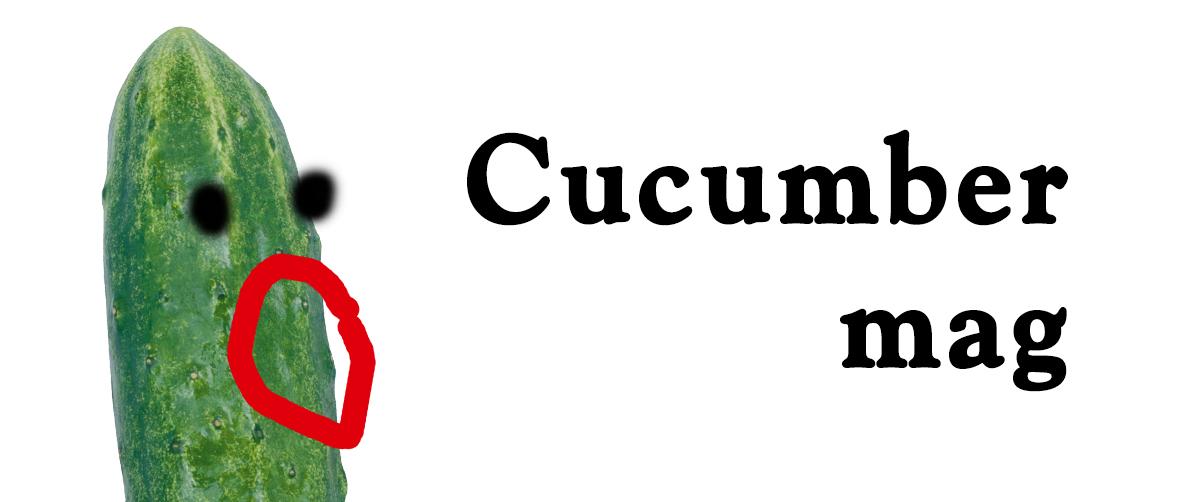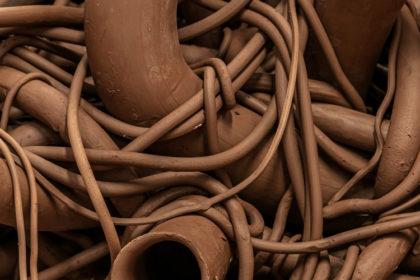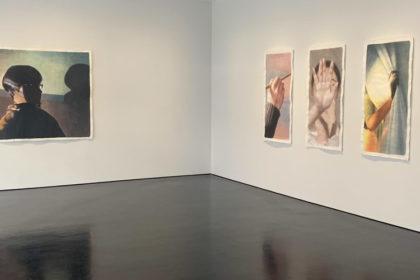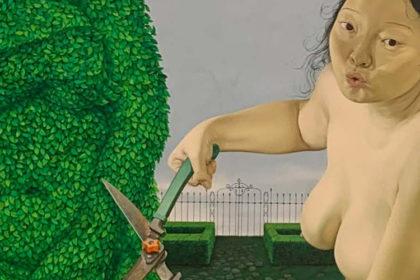Interview by Rosecrans Baldwin
Summer Wheat’s portraits grapple with America’s class system—where everyone has an opportunity to be pretty, petty, or just plain horrible. She describes below how Rembrandt and de Kooning taught her to make things visceral.
Wheat was born in 1977. She received a Masters of Fine Art from the Savannah College of Art and Design, and was a resident artist at the Triangle Arts Association (Brooklyn, NY). Her work is currently included in The Calendar’s Tale curated by Lynne Cooney at the 808 Gallery in Boston University. She has an upcoming solo at Valentine in Queens, NY.
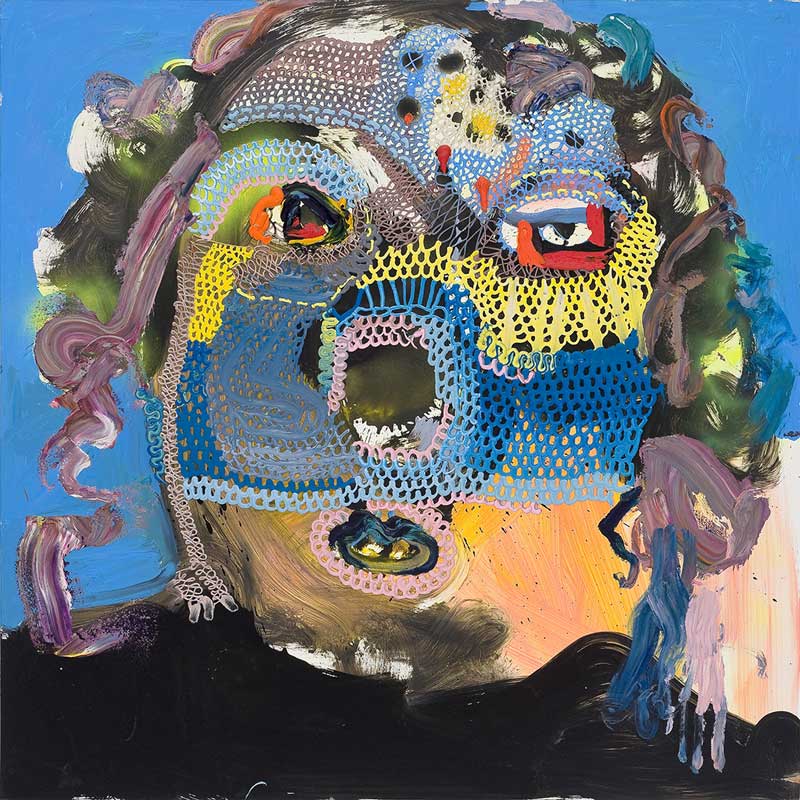
Summer Wheat, Bully, 2011, acrylic and oil on canvas.
Summer Wheat is known for her vibrant paintings, multifaceted sculptures, and immersive installations that weave together the history of materiality, figuration, and abstraction in both fine art and craft milieus.
A signature aspect of Wheat’s work is her expressive use of color and unique method of building a painting, which integrates various tools, from her fingers, to syringes, to plastic scrapers, to cake decorating paraphernalia. Using vibrant, almost fluorescent colors of acrylic paint, she combines multiple physical techniques—pushing paint through wire mesh, painting directly onto a heavily impastoed surface, or applying select embellishments—that require her to move around her canvas, working both vertically and horizontally, on the front and the back of each piece. Wheat’s methods and engagement with the emotive nature of color embrace intuition and felt experience over conventional reason and logic, destabilizing the boundaries between figure and ground, representation and abstraction, portrait and landscape, and fine art and craft. The result is tactile, vivid work that engages process, form, and narrative equally, creating layered, non-linear compositions that offer alternative versions of history, mythology, and folklore [1].

Summer Wheat, Banka and Borth, 2011, acrylic and oil on canvas.
Rosecrans Baldwin: Savannah vs. New York—is there a contest? Can New York even hold a candle to Georgia?
Summer Wheat: The last time I visited Savannah I had a great time, but I heart New York.
RB: Your paintings have so much sculpture, movement, dimension. When you begin a piece, does it start as a painting? Is the original idea a big wallop or does it come in bits and pieces?
SW: I love using paint as a tactile medium, and I am very interested in surface quality—no matter if the painting is thick and seems more sculptural or if it is atmospheric. Either way, I am interested in creating some sort of space that alters the way material is typically seen. It’s strange, but some of the painters I truly learn from are unlikely combinations, like Vermeer and de Kooning. I want certain parts of the work to feel like a crust of bread from Vermeer’s “Milkmaid,” as well as portray the speed and visceral qualities of something like “Woman, Sag Harbor” by de Kooning. They likely seem very unrelated, and people are surprised by many of my influences, but I have spent a long time trying to decipher how a painter can translate paint in many different forms. I want my work to throw the viewer off a bit—they definitely throw me off a bit! The way they come together depends on the painting. Sometimes they come together in one day, and other works I spend a year or two trying to resolve.
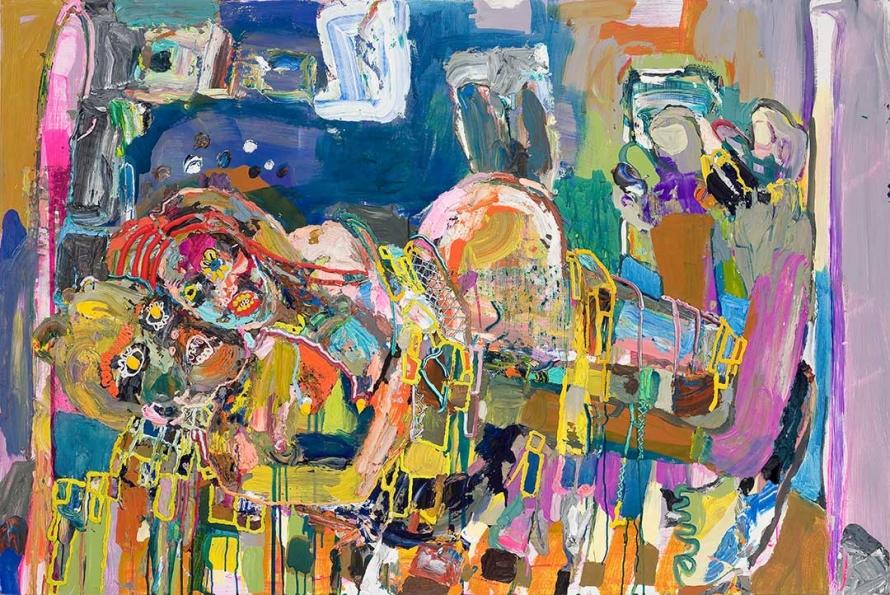
Summer Wheat, Dirty People, 2011, acrylic and oil on canvas
RB: Then when is a piece done? When do you stop?
SW: When I can look at it for long periods of time and there is nothing that bugs me about it anymore. I could compare finishing a painting to finishing getting ready for a party. I try not to wear too little or too much makeup. Or get overly decked out or too understated. Somehow, as silly as it might sound, this is the way I think of it.
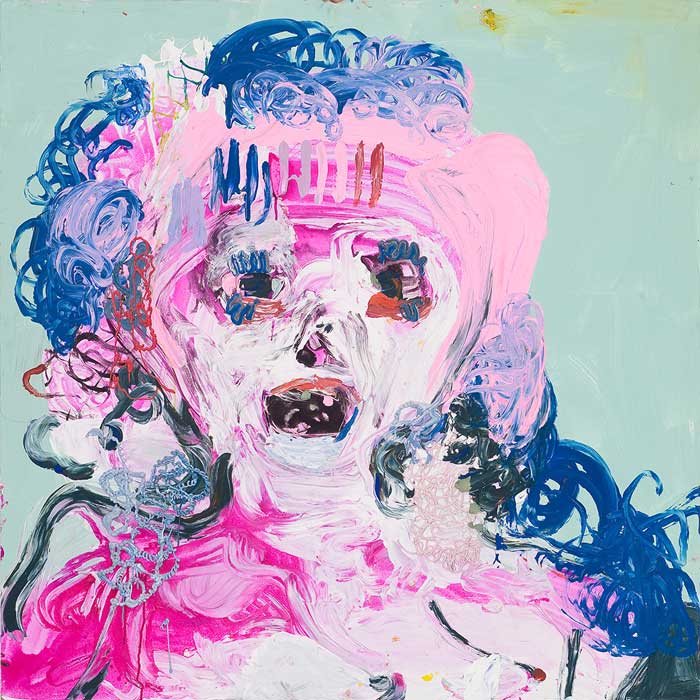
Summer Wheat, Duchess, 2011, acrylic and oil on canvas.
RB: How many of the faces in the paintings are your own? How much of yourself goes into these figures?
SW: I suppose all of them are different aspects to my personality. But I do not feel like these different characters are divorced from all people. I was once enthralled by Rembrandt’s self-portraits. He really performed for us in a long-going series. In one work he was a scruffy looking vagabond, in another a debonair gentleman. I find that all the elements of life are within all of our personalities. It is all-encompassing, the horror, disgust, beauty, elegance; we are all combinations and versions of the same things. I think the only difference is some people are more aware of the different facets of themselves than others.
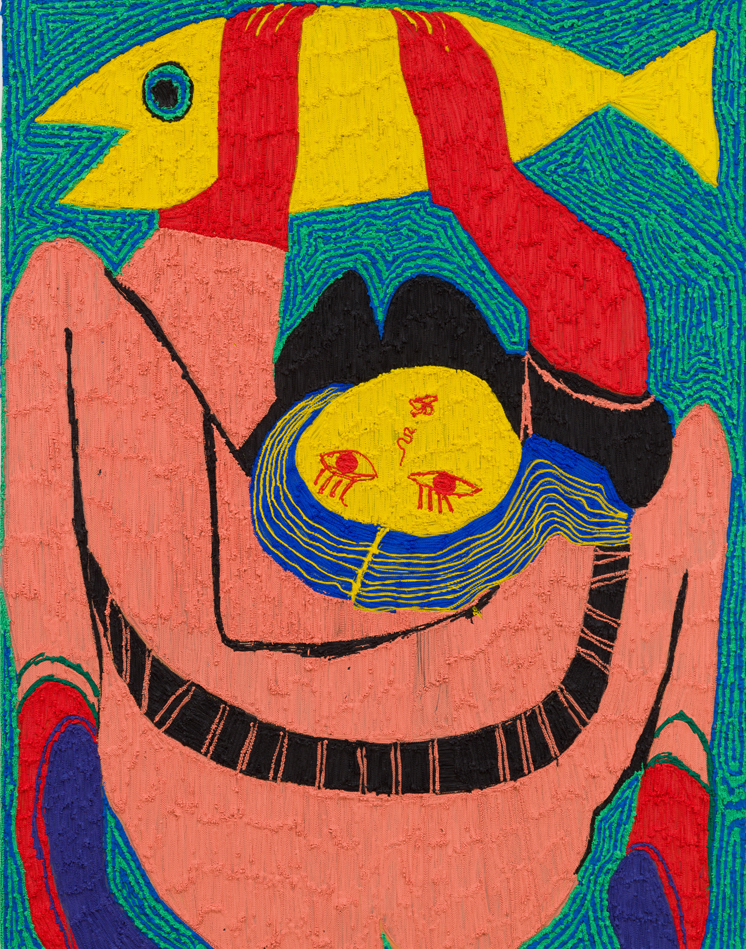
Summer Wheat, Fisher,2018, acrylic on aluminum mesh.
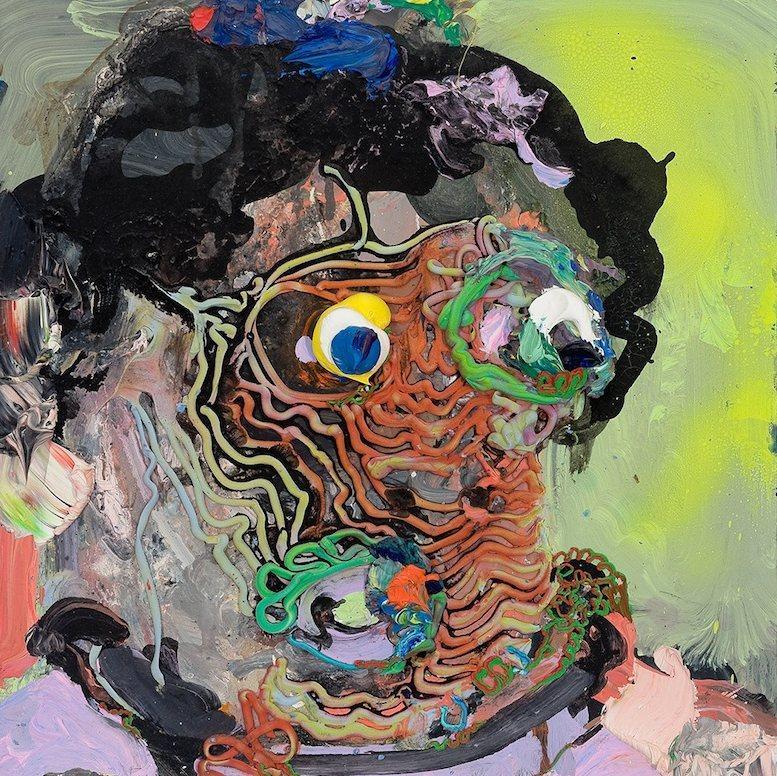
Summer Wheat, Jobeth Uinblae, 2011, acrylic and oil on canvas.
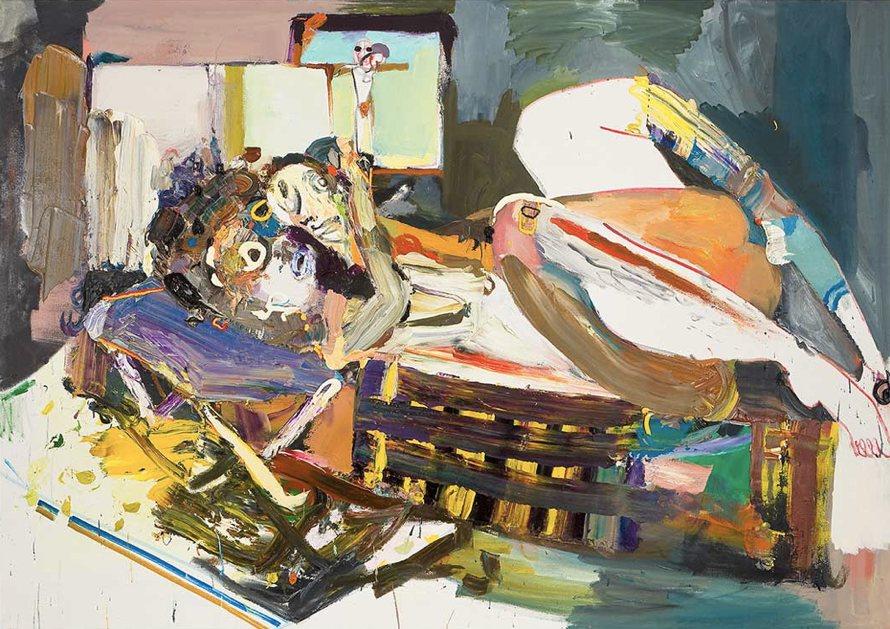
Summer Wheat, Preacher, 2010, acrylic and oil on canvas.
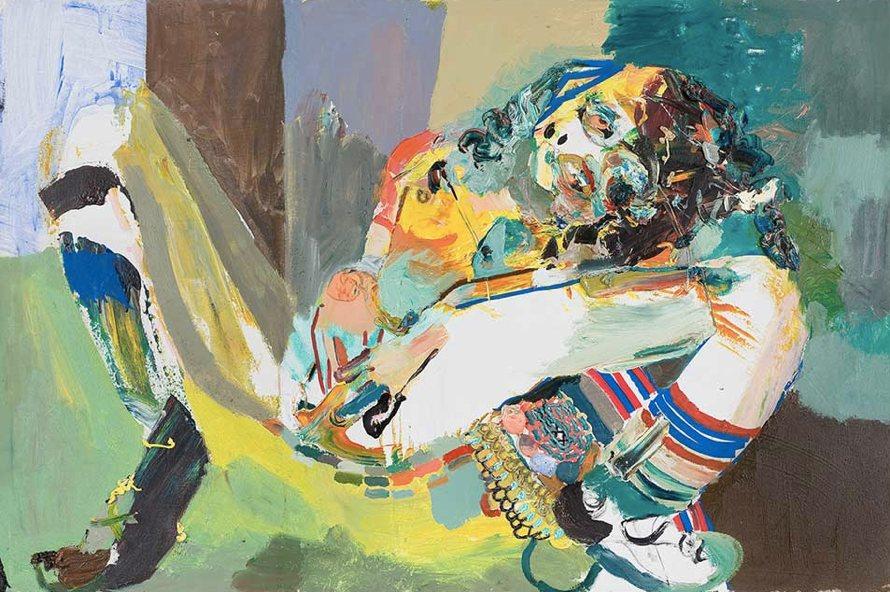
Summer Wheat, Scratchpad Version Two, 2011, acrylic and oil on canvas.
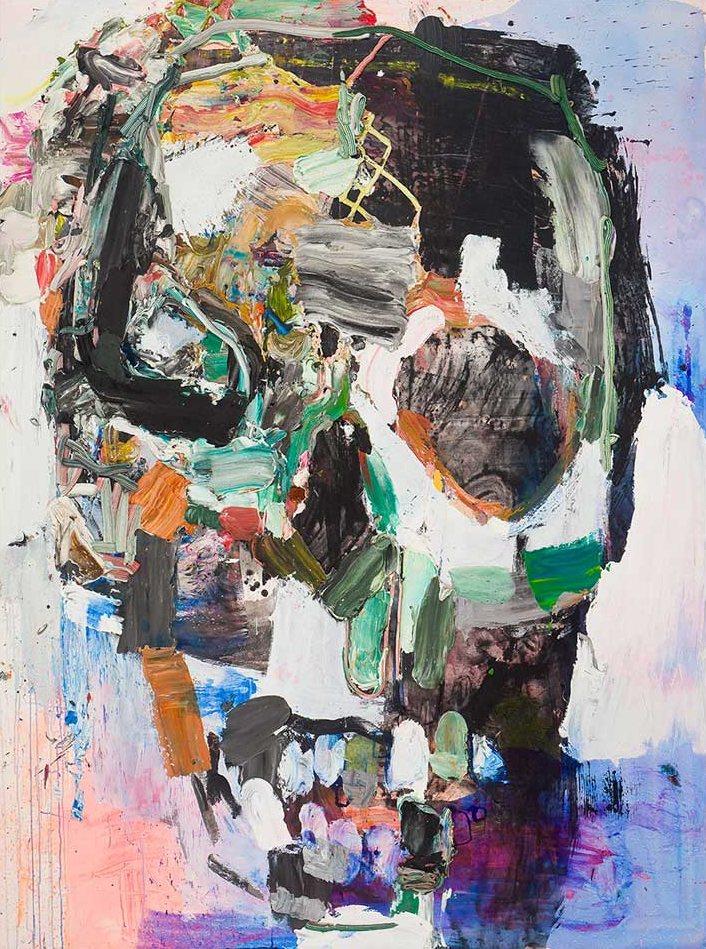
Summer Wheat, Skull, 2010, acrylic and oil on canvas.
RB: Coffee or tea?
SW: Never tea.
RB: What are you working on now?
SW: Right now I am working on getting some new work together for a solo exhibition I have in December at Valentine gallery in Ridgewood, Queens. They are paintings about my favorite love story [2].
1 Summer Wheat profile on https://www.shulamitnazarian.com/artists/35-summer-wheat/
2 Interview posted on The Morning News (TMN), an independent web ’zine https://themorningnews.org/gallery/north-american-scum
